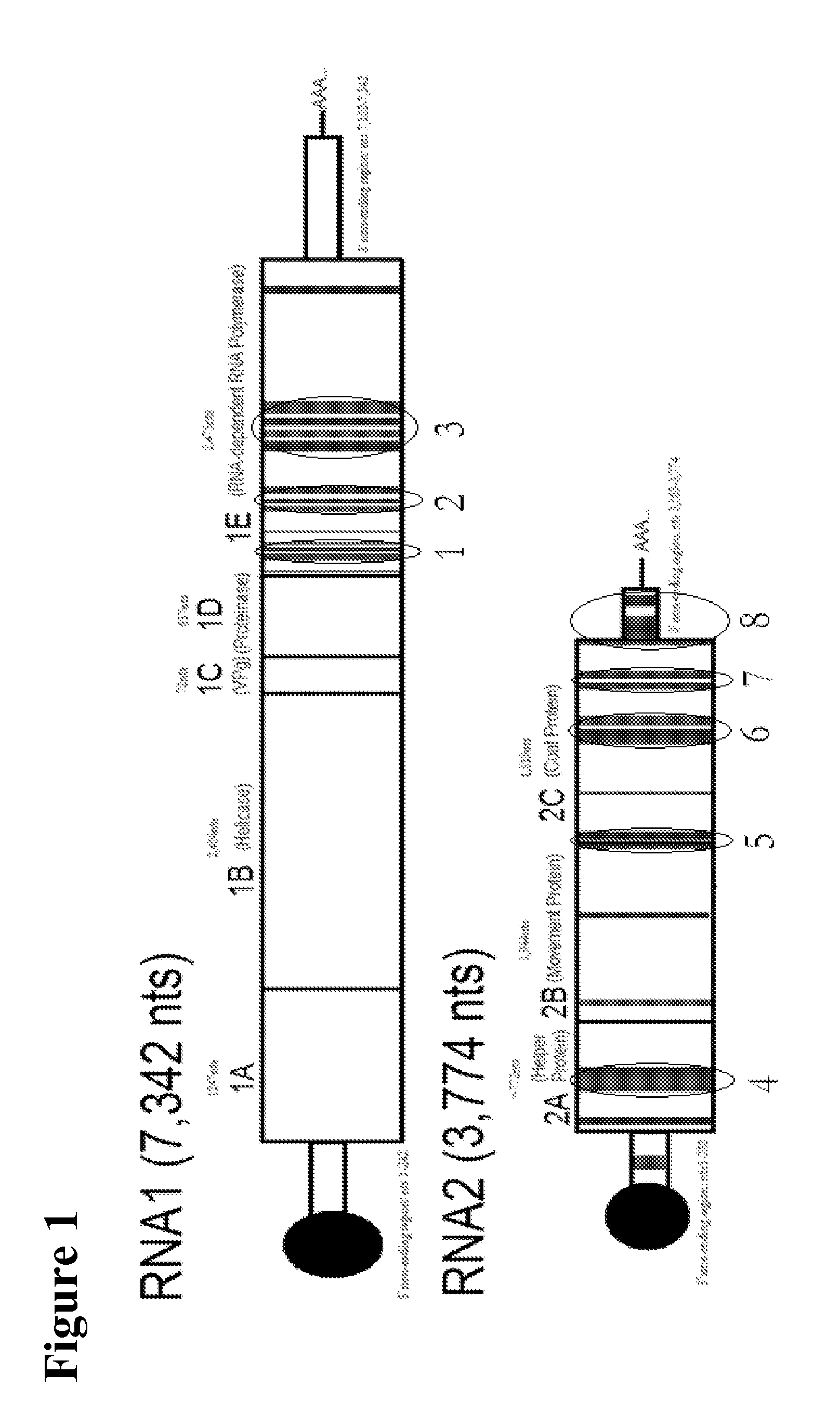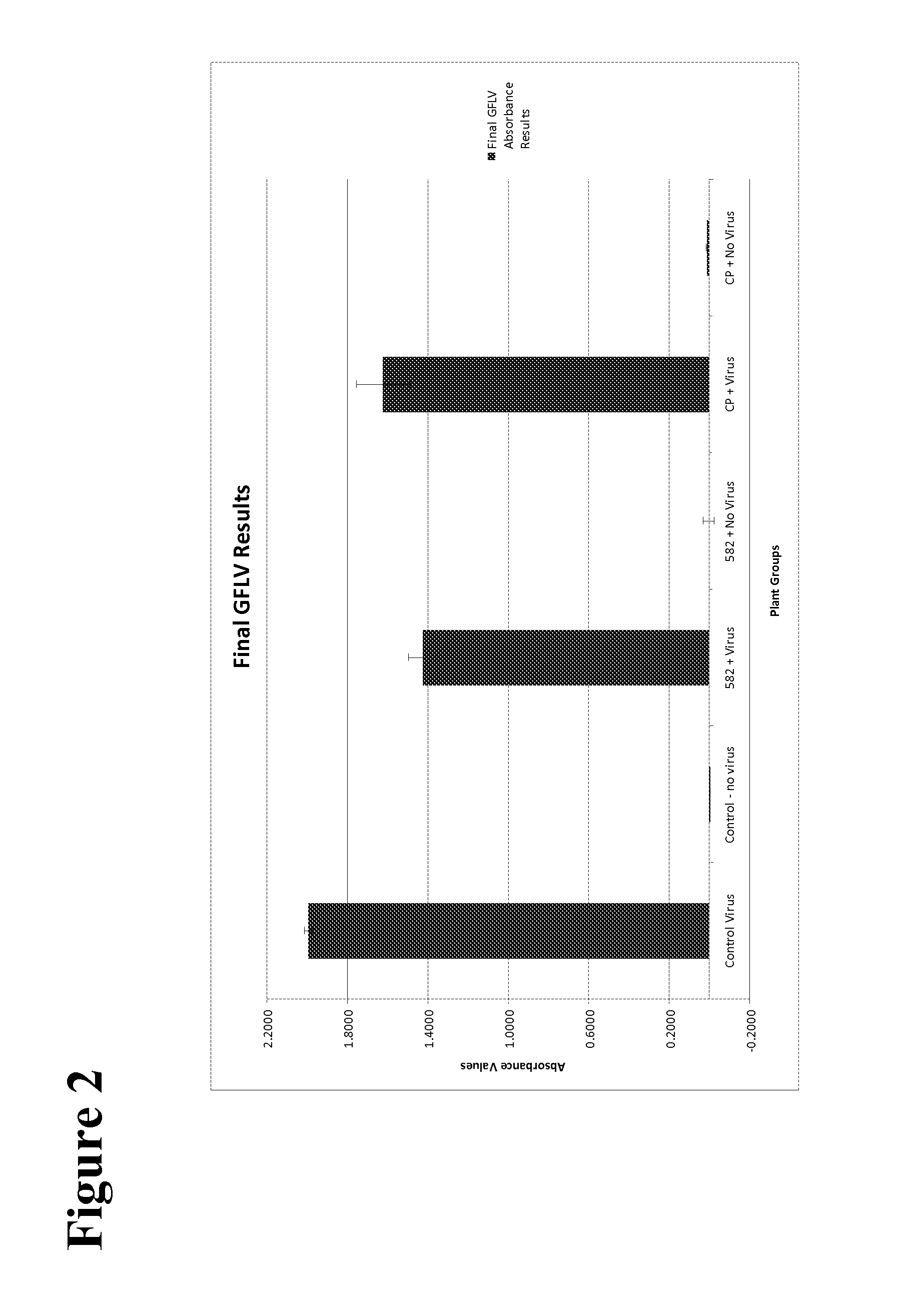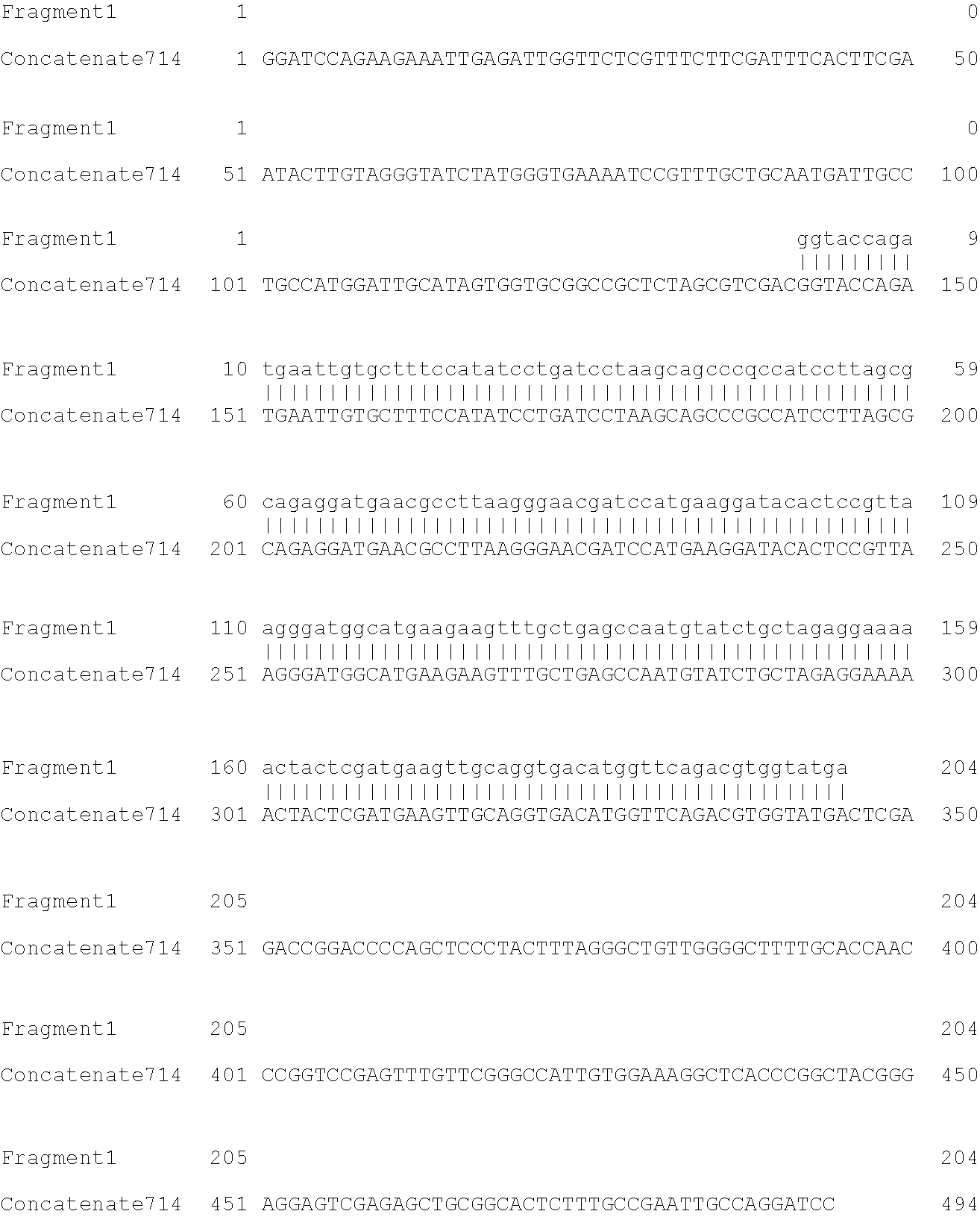Engineering broad and durable resistance to grapevine fanleaf virus in plants
a technology of fanleaf virus and plant, applied in the field of disease resistance in plants, can solve the problems of low fruit production of infected grapevines, degeneration and death of infected grapevines, and the most damaging and widespread diseases of grapevines, and achieve the effects of reducing or minimizing, facilitating effective and economical protection, and increasing production efficiency
- Summary
- Abstract
- Description
- Claims
- Application Information
AI Technical Summary
Benefits of technology
Problems solved by technology
Method used
Image
Examples
Embodiment Construction
[0035]Purified nucleic acid molecules, vectors, cells, plants, plant components, products, and methods of present invention relate to the protection of plants (e.g., grape plants) against plant diseases caused by plant viruses (e.g., GFLV and the serologically related ArMV). Additional details of the invention are provided below.
Nepovirus
[0036]Nepovirus is a genus of viruses in the family Comoviridae that are transmitted by nematodes. Nepoviruses are classified as type IV viruses under the Baltimore system; that is, they have a two part, single-stranded, RNA genome. These two segments of the RNA genome, RNA1 and RNA2, are separately encapsulated into icosahedral viral particles. RNA1, approximately 8,000 base pairs in length, encodes genes important for replication of the virus (e.g. RNA-dependent RNA Polymerase). RNA2, between 4000 to 7000 base pairs in length, has genes encoding Movement protein and Coat protein, and is important for cell-cell transmission of the virus. Each RNA h...
PUM
| Property | Measurement | Unit |
|---|---|---|
| length | aaaaa | aaaaa |
| resistance | aaaaa | aaaaa |
| nucleic acid | aaaaa | aaaaa |
Abstract
Description
Claims
Application Information
 Login to View More
Login to View More - R&D
- Intellectual Property
- Life Sciences
- Materials
- Tech Scout
- Unparalleled Data Quality
- Higher Quality Content
- 60% Fewer Hallucinations
Browse by: Latest US Patents, China's latest patents, Technical Efficacy Thesaurus, Application Domain, Technology Topic, Popular Technical Reports.
© 2025 PatSnap. All rights reserved.Legal|Privacy policy|Modern Slavery Act Transparency Statement|Sitemap|About US| Contact US: help@patsnap.com



